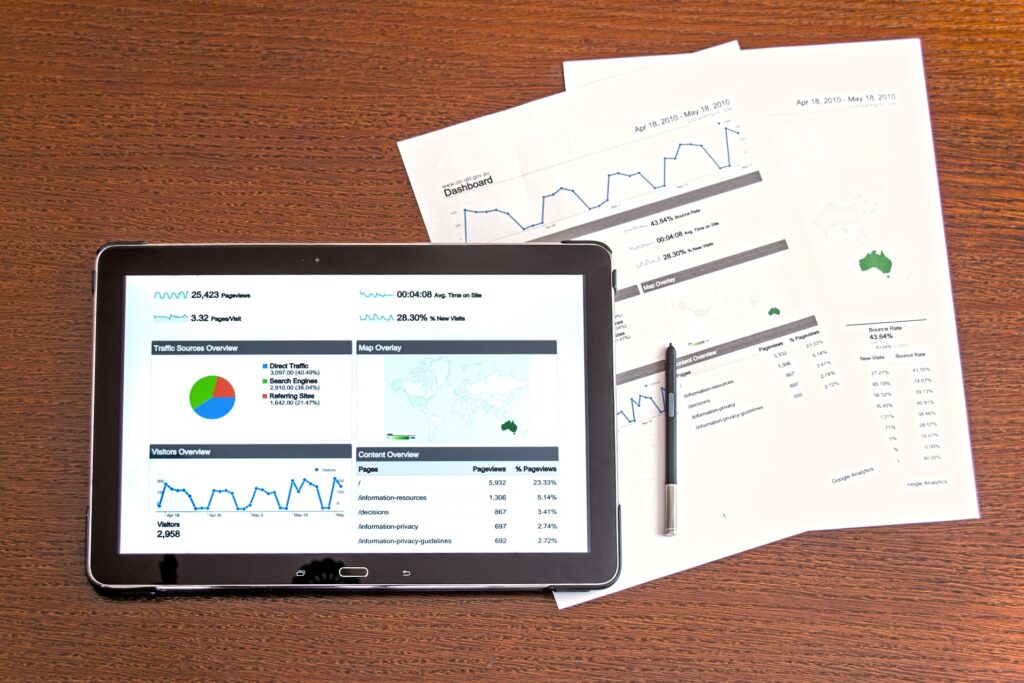An Introduction to Google Ads
Google Ads is an advertising platform by Google that allows businesses to display ads in search results and other relevant websites. With Google Ads, ads are displayed based on relevant keywords entered by users. This means your ads only appear when someone searches for a term related to your product or service.
One of the key features of Google Ads is the ability to set the budget and goals of the ads. You can decide how much money you want to spend on your ads and what goal you want to achieve, such as increasing traffic to your website or generating conversions.
Google Ads also offers various ad formats and placement options, such as text ads, display ads, video ads, and ads in mobile apps. Each ad has its own benefits and can be selected based on your goals and target audience.
In the next section of this guide, we’ll take a closer look at the various features and settings of Google Ads and show you how to create your first campaign.
How Google Ads Works?
Google Ads operates on an auction principle, where ad placements are determined based on various factors. When a search query is entered, an auction is triggered, and Google determines which ads to display based on the bid and quality of the ad.
The bid is the amount you’re willing to pay for a click or impression of your ad. The quality of the ad is assessed based on the ad text, relevance to the search query, and the performance of your website.
Another important concept in Google Ads is the quality score. This score evaluates your ad on a scale of 1 to 10 and influences the positioning of your ad. Higher quality means better positioning and potentially lower cost per click.
By optimizing your bid and the quality of your ad, you can increase your visibility and the success of your campaign.
Benefits and Advantages of Google Ads
Google Ads offers a variety of benefits and advantages for businesses of all sizes and industries. By understanding these benefits, you can harness the full power of Google Ads and achieve your marketing goals.
Firstly, Google Ads offers immense reach. With billions of search queries per day, you can reach potential customers exactly when they’re searching for products or services you offer. You can also target your ads geographically and demographically to reach your audience even more effectively.
Secondly, with Google Ads, you can control your costs precisely. You set a daily budget and only pay when someone clicks on your ad. This allows you to use your marketing budget efficiently and achieve a high return on investment.
Additionally, Google Ads provides extensive tools and analytics to monitor and optimize the success of your campaigns. You can track the performance of your ads in real-time and make adjustments to achieve better results.
Overall, Google Ads offers an effective and measurable way to showcase your brand, attract more customers, and scale your business.

Basic Terms and Concepts
To fully leverage the potential of Google Ads, it’s important to understand the basic terms and concepts. This knowledge allows you to plan and optimize your campaigns effectively.
One important term is “Keywords.” Keywords are the words or phrases potential customers search for. By selecting relevant keywords, you can ensure your ads appear for the right search queries.
Another term is “Ad Rank.” Ad rank determines where your ad is placed in search results. It’s influenced by factors like maximum bid and the quality of your ad.
A concept you should understand is “Quality Score.” Quality score evaluates the relevance and quality of your ad, your website, and your landing page. A good quality score can lead to higher ad rank and lower costs.
Tips and Tricks for Success with Google Ads
To succeed with Google Ads, there are some tips and tricks that can help you optimize your campaigns and achieve better results. Here are some best practices:
- Conduct thorough keyword research: To select the right keywords, it’s important to understand the search intent of your potential customers. Use tools like Google’s Keyword Planner to find relevant and high-quality keywords.
- Create relevant ad text: Your ads should be appealing and relevant to the search queries entered. Use the selected keywords in your ad text to increase the likelihood of your ads being clicked.
- Optimize your landing pages: Ensure the content on your landing pages meets the expectations of your visitors and contributes to fulfilling their needs. A user-friendly and well-designed landing page can improve the conversion rate.
- Regularly monitor and analyze your campaigns: Use Google Ads’ analytics tools to track the success of your campaigns. Identify areas for improvement and make adjustments to achieve better results.
By considering these tips and tricks and continuously working on optimizing your campaigns, you can harness the full potential of Google Ads and achieve effective advertising success.
Web development
Case Studies and Success Stories
Case studies and success stories are valuable tools for deepening your knowledge of Google Ads and discovering new strategies. By examining successful campaigns from other businesses, you can gain valuable insights and apply them to your own campaigns.
Check out case studies and success stories on the Google Ads website or look for industry-specific websites and blogs reporting on successful Google Ads campaigns. Look for companies with similar target audiences and goals as yours.
Analyze the approaches described in the case studies and success stories, and consider how you can adapt them to your own campaigns. Experiment with new ideas and measure success to determine which strategies work best.
Avoiding Common Mistakes
When using Google Ads, it’s important to recognize and avoid common mistakes. These mistakes can negatively impact the performance of your campaigns and affect your results.
One common mistake is not adjusting campaign settings correctly. Ensure you carefully set your audience, geographic targeting, and bidding strategy. Incorrect selection of these settings can result in wasted budget and poorer results.
Another common mistake is not testing ad variations. A/B testing is a great way to compare different ads and find out which ones work best. Don’t neglect testing to achieve optimal results.
Finally, don’t forget to regularly monitor and optimize campaign performance. Review your ads, keywords, and conversion rates to identify areas where your campaigns can be improved.
The Future of Google Ads
Google Ads has experienced many changes in recent years and will continue to play an important role in digital marketing in the future. With the advent of new technologies and the constant evolution of the online advertising market, it’s essential to stay up to date.
A promising development is AI-driven advertising campaigns. By using artificial intelligence, ads can be automatically optimized and personalized to achieve the best results. AI can analyze user behavior using algorithms and optimize ad placement and bidding accordingly.
Another important aspect is the increasing integration of voice search and smart devices into Google Ads. Voice-controlled assistants like Siri and Google Assistant are gaining popularity, and businesses need to optimize their ads accordingly to reach these users.
Furthermore, Google Ads will continue to offer tailored features and tools to help advertisers make their campaigns more effective. For example, ad extensions allow for the integration of additional information such as business locations, product reviews, and prices into ads to increase relevance and value for potential customers.
It’s important for advertisers to stay informed about the latest developments and features of Google Ads to effectively design their campaigns and take advantage of the benefits this advanced advertising platform offers.
Conclusion
Having discussed the future of Google Ads in previous sections, you now know how important it is to stay updated and utilize the constantly evolving features and tools. In this concluding section, we want to discuss some proven strategies and tips on how to get the most out of your Google Ads campaigns.
- Set clear goals: Before launching a campaign, carefully consider what you want to achieve. Whether it’s increasing brand awareness, driving traffic to your website, or increasing sales, clear goals help you design your campaign effectively.
- Use keyword research: Selecting the right keywords is crucial to reaching relevant users. Use tools like Google’s Keyword Planner to find the best keywords for your campaign.
- Conduct A/B tests: Test different versions of your ads and landing pages to find out which ones work best. Small changes can often have a big impact.
- Regularly monitor your campaigns: Be attentive and analyze the performance of your ads and keywords. Continuously optimize your campaigns to achieve the best results.
- Stay up to date on new developments: Google Ads is constantly evolving. Subscribe to blogs and newsletters to stay informed about the latest features and best practices.
With these tips, you can launch an effective and successful Google Ads campaign. Remember that continuous optimization and adjustment are crucial to achieving maximum results. Take advantage of this powerful advertising platform and watch your business numbers soar.








